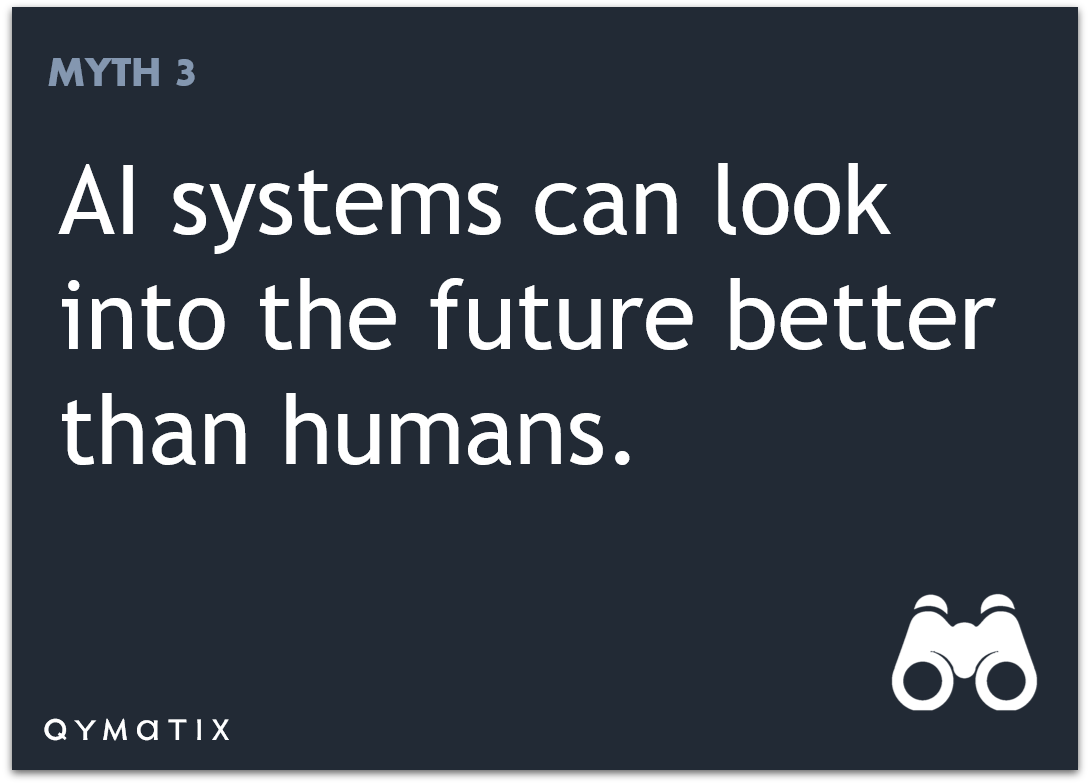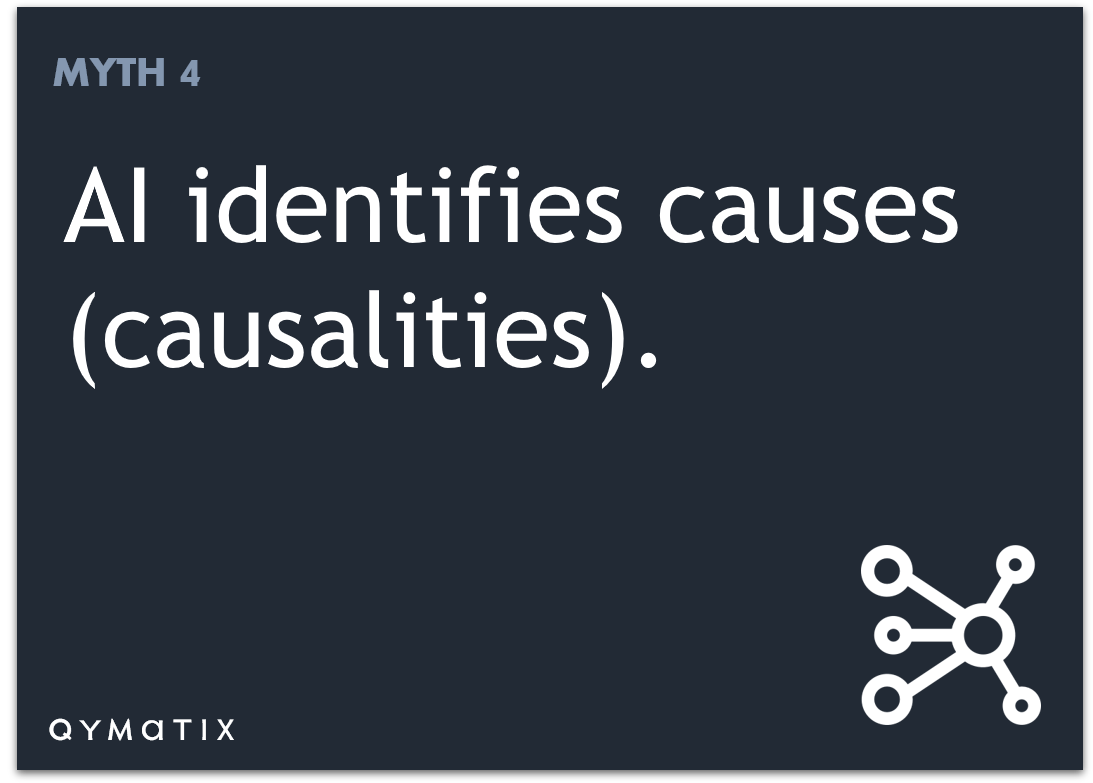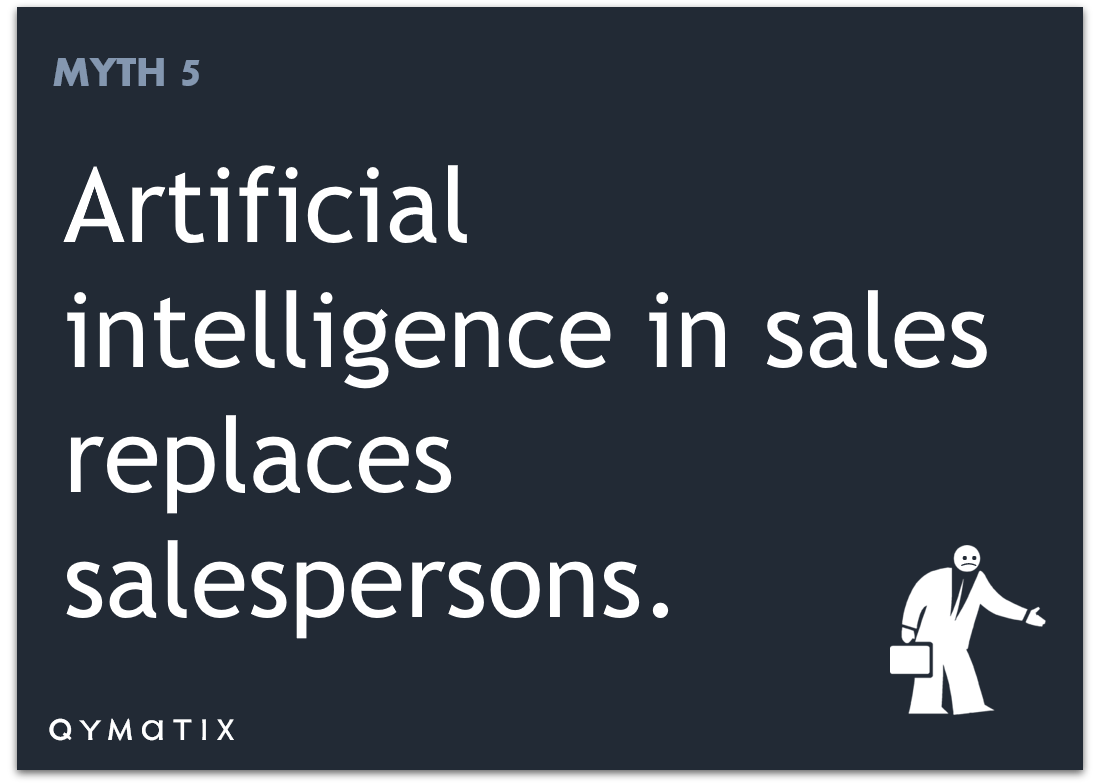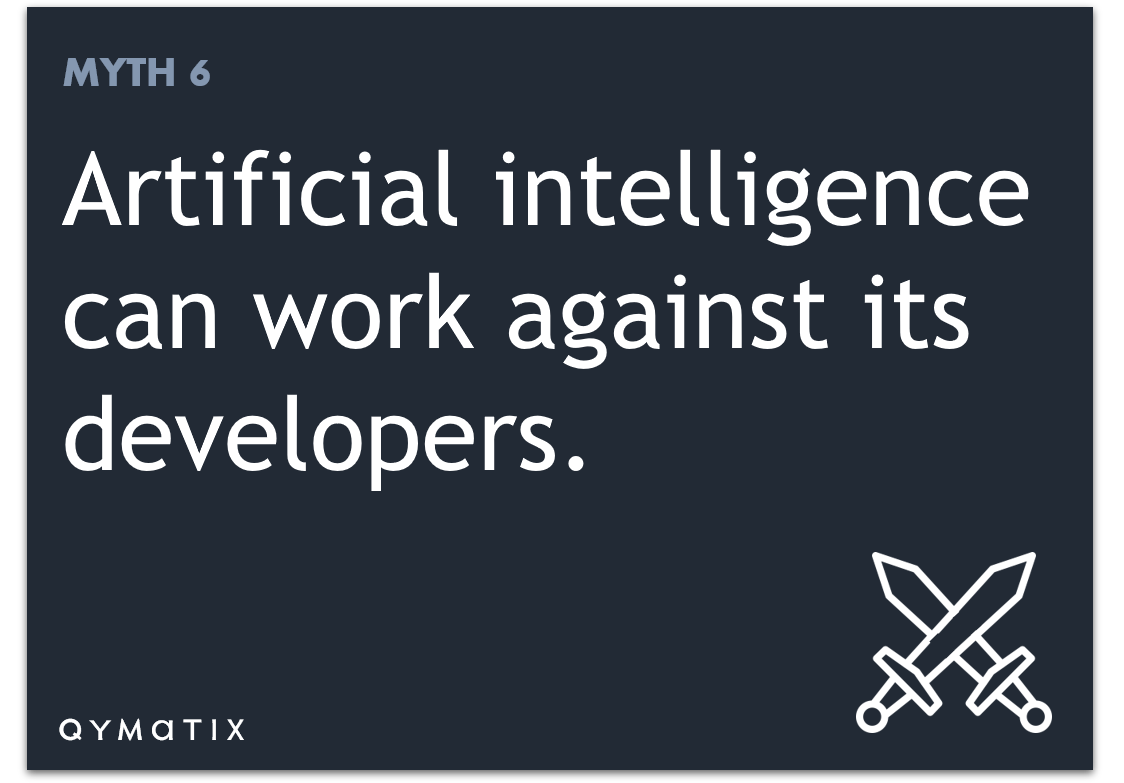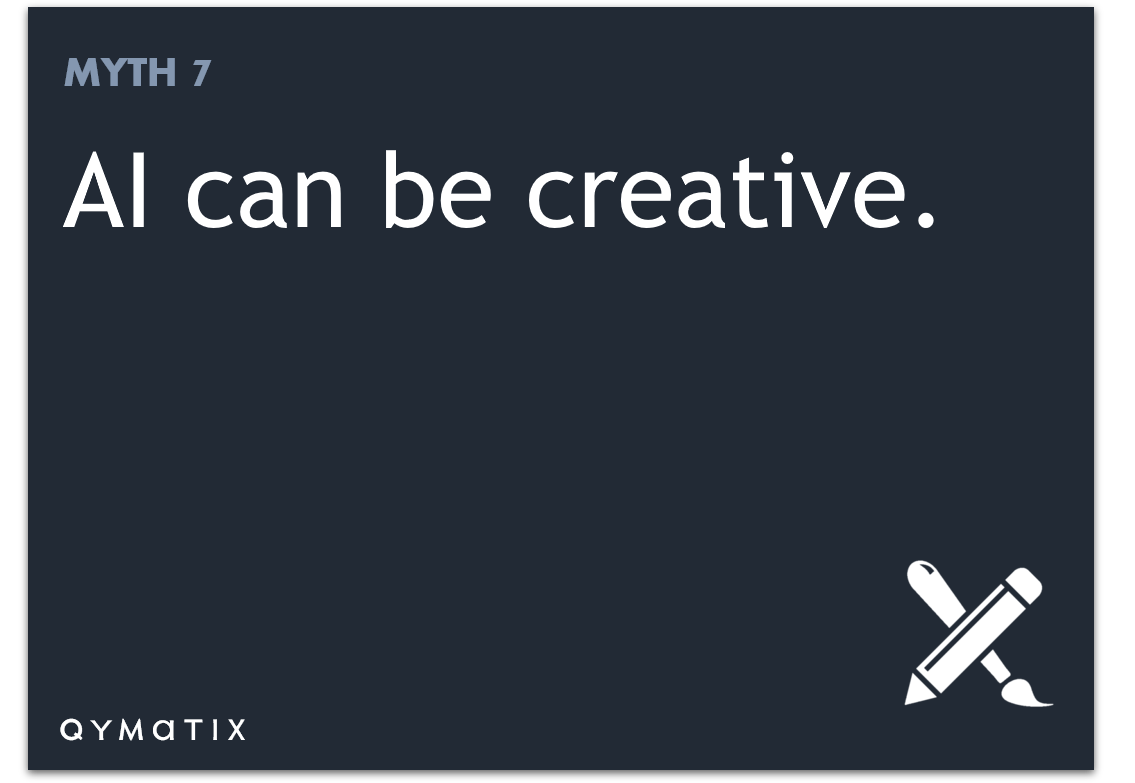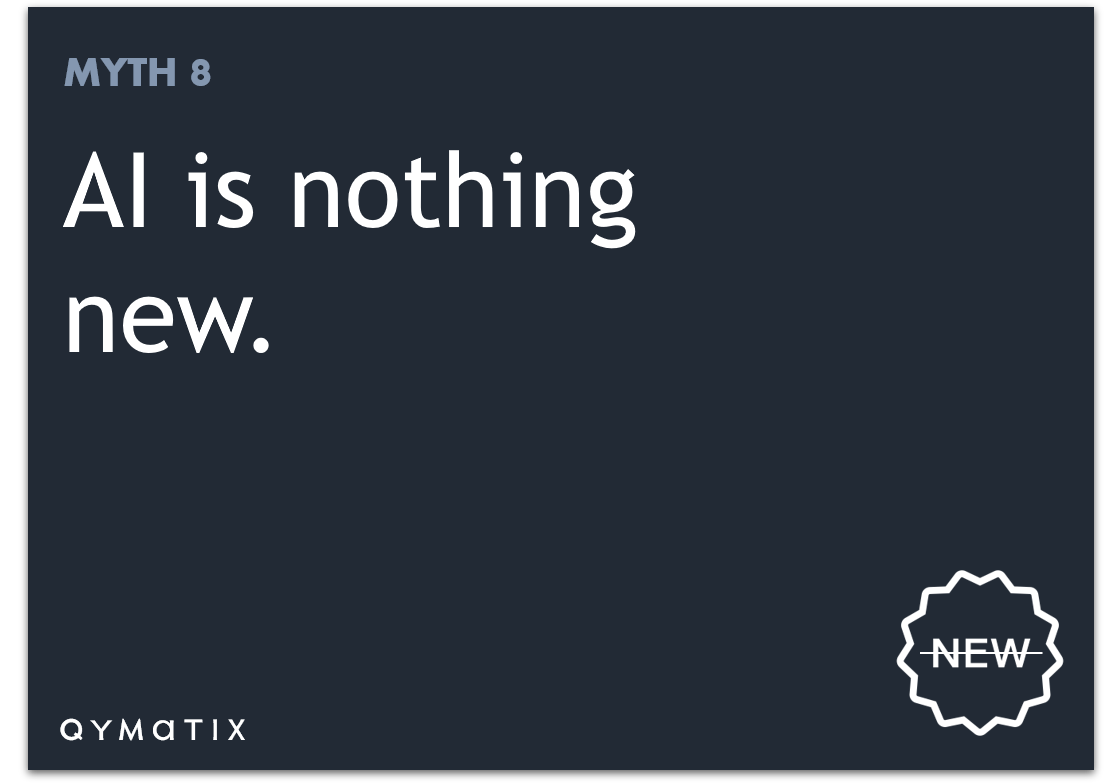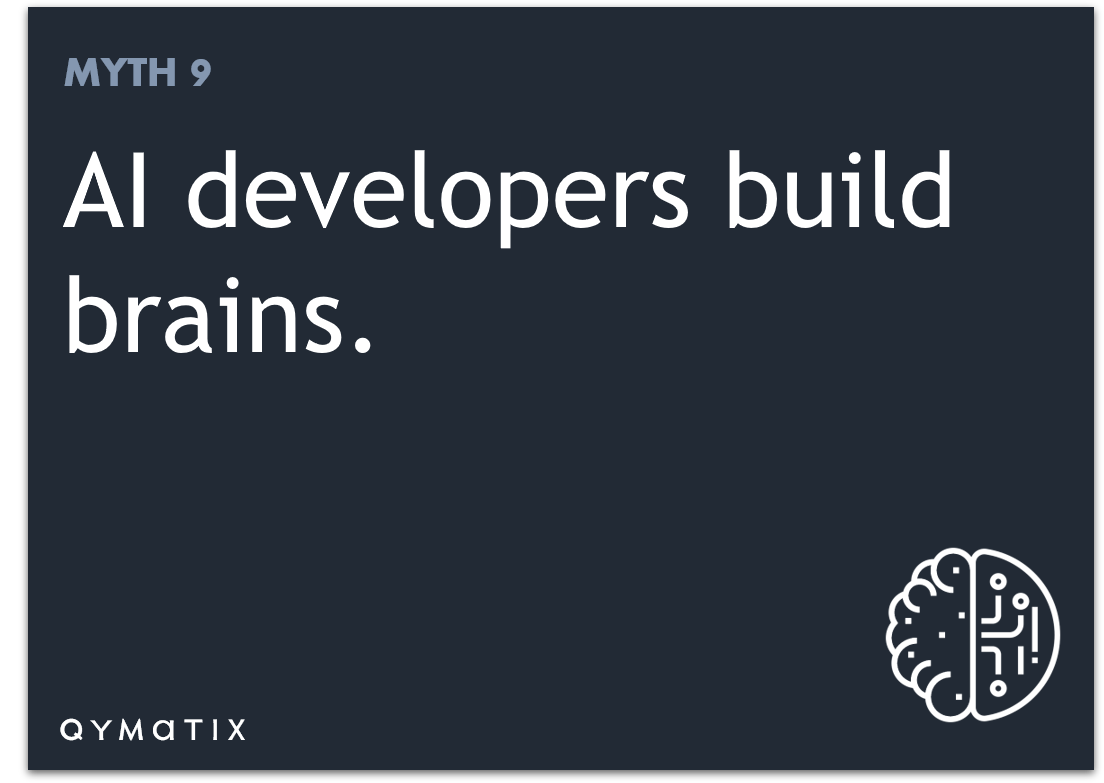Artificial intelligence: truth or myth?
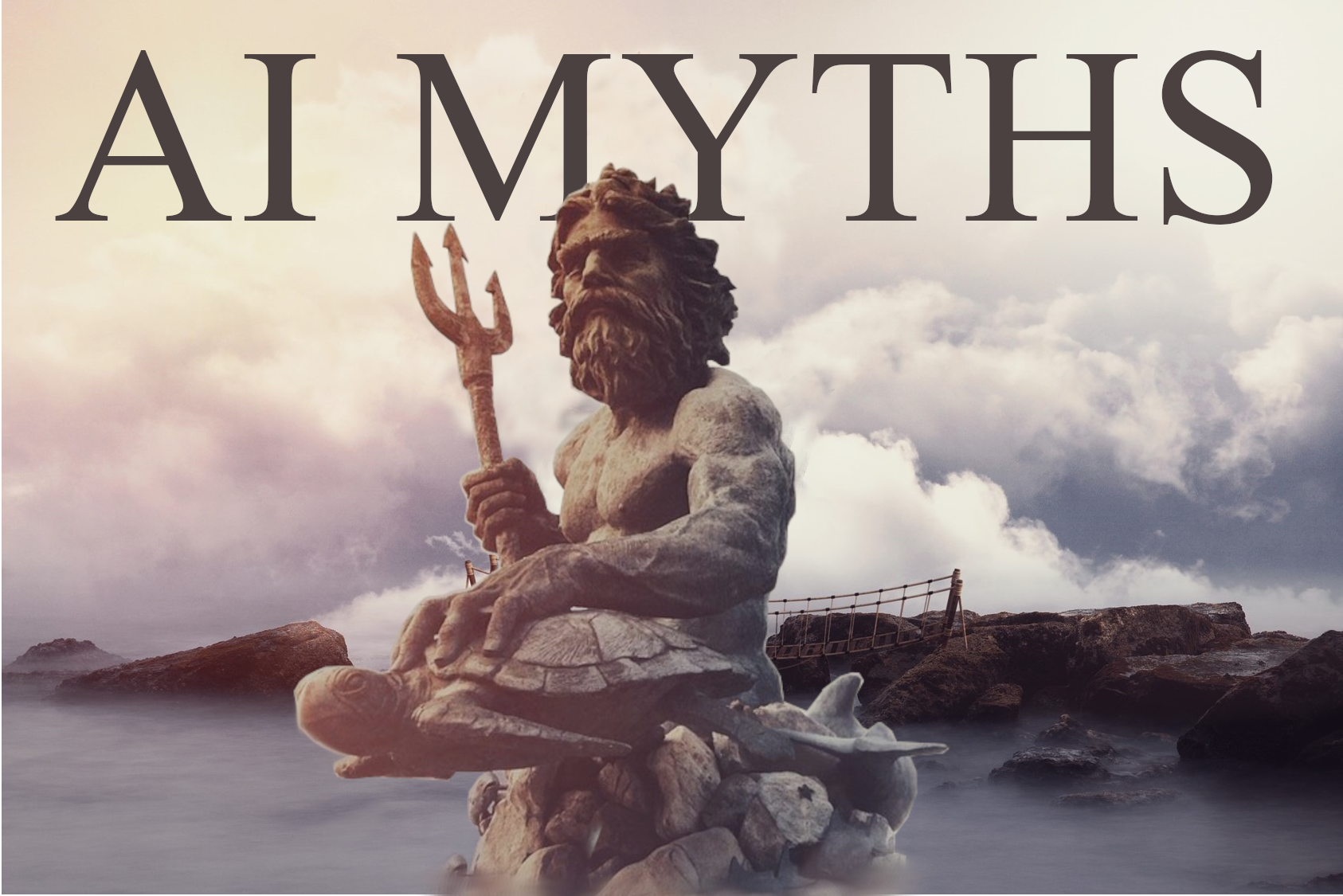
Please enter your Email address
Statements about AI are very diverse. They reach from “new superpower” to “much noise about nothing”. In this article, you will learn truths and myths according to AI.
How much do you know about artificial intelligence (AI)? Can you tell what is a truth or myth concerning AI and machine learning? Test your knowledge here.
As developers and distributors of AI-based predictive analytics software for B2B sales, we spend the whole day dealing with topics related to machine learning, artificial intelligence and its acceptance in the B2B sector.
In the course of projects, customer meetings or constant research, we have picked up some myths and also exciting truths about artificial intelligence of the last years. In the following, we share our “TOP 10 AI statements” with you. Of course, you will also get some short background information for each statement.
1. AI and machine learning are the same thing.
Click here to get the answer.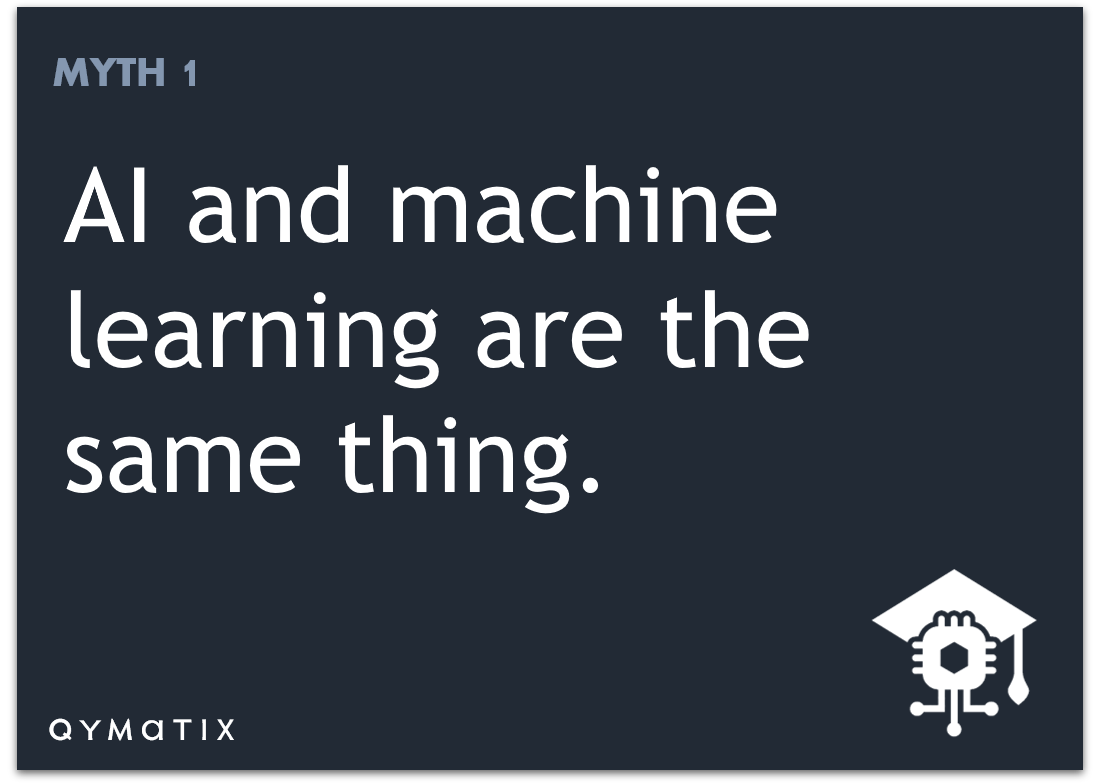
Wrong.
Machine learning (ML) is a sub-area of artificial intelligence – or a way of achieving AI.
Accordingly, AI comprises considerably more applications than programs based on ML. ML is a very effective way to create AI.
You can see the difference between ML and AI, also in the most known definitions of ML and AI.
Definition AI by Elaine Rich: “Artificial intelligence is the study of how to make computers do things at which, at the moment, people are better.”
Definition ML: “artificial” generation of knowledge from experience.
2. AI is only for large
companies.
Click here to get the answer.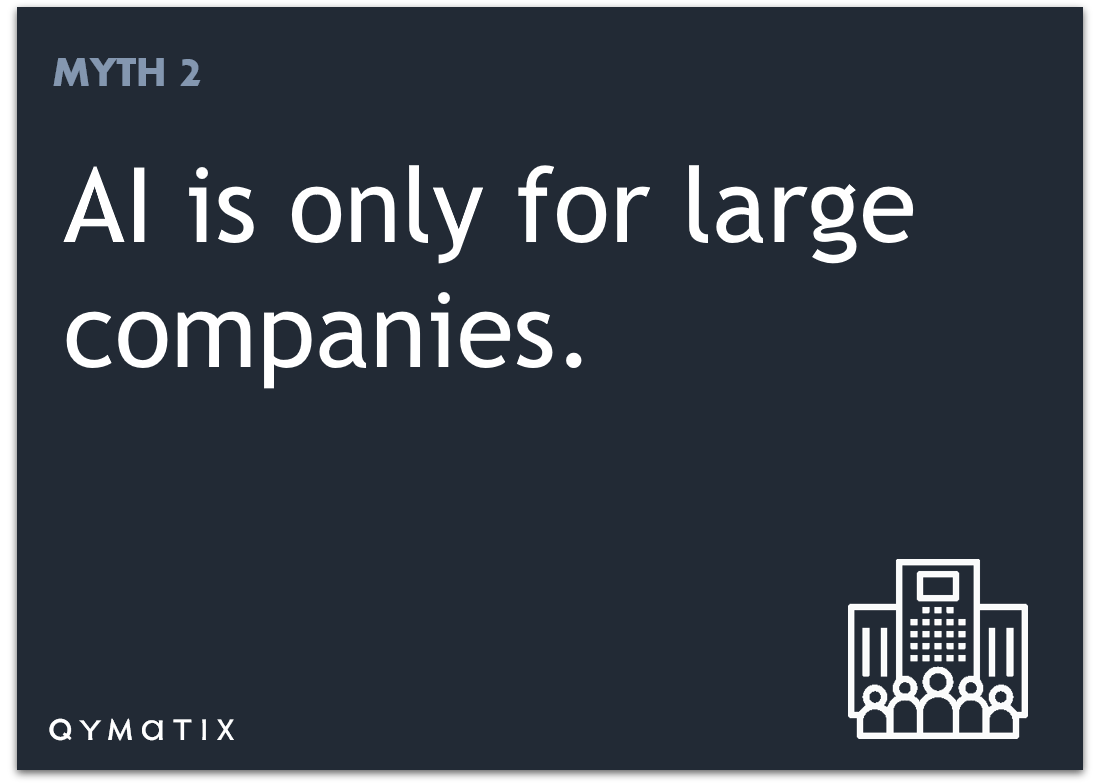
Wrong.
AI benefits mainly companies in possession of data.
As soon as the number of customers, products, and sales transactions are more than a couple of hundreds, it is worth thinking about AI applications.
AI can predict cross-selling opportunities, pricing potential and churn risks from your sales transactions alone.
It is therefore undoubtedly worthwhile for small and medium-sized companies to calculate a business case to determine the possible benefits.
3. AI systems can look into the future better than humans.
That depends. Tends to be right.
But a vast advantage that humans have is their intuition. Means, that if a person knows a lot about an area and has a lot of experience, he usually has good intuition.
What can AI do better? Making statistically precise predictions based on a lot of past data. Man cannot keep up with this and does not have to.
Are you interested in this topic? The article “Gut feeling vs data-based decisions” gives more insights to you.
4. AI identifies causes
(causalities).
Wrong.
AI applications recognise pure correlations and patterns in data sets.
For example, an AI can only say: “If feature A occurs, feature B often occurs as well.”
Attention! This is not to say: “Because of feature A, feature B occurs.” AI does not know “because”.
That means that AI software CANNOT answer the question of “why”, at least not in this way.
In practice, people often misunderstand this topic. You can read more details in our blog post Correlation vs Causality.
5. Artificial intelligence in sales replaces salespersons.
No.
AI can replace the tasks of a salesperson – but not the whole job.
What will be replaced? Simple, repetitive tasks (e.g. e-mail automation, data analysis, reports).
What cannot be replaced? Professional competence, human interaction, empathy, and complex processes that require explanation.
What is happening in reality? Salespeople who use AI replace those who do not.
You can find more about the interaction between salespeople and AI here.
6. Artificial intelligence can work against its developers.
Wrong!
This hypothesis goes firmly in the direction of AI in the form of Terminator, Hal 9000 or Ex Machina. These science fiction scenarios are science fiction.
You can roughly divide AI into “strong AI” and “narrow AI”.
Strong AI is supposed to match or even exceed the capabilities of humans. So, Terminator or I-Robot after all? Although a matter of discussion for some AI pundits, there is no strong AI today.
All existing AI systems belong to the category of “narrow” AI. Such programs find solutions for concrete application problems—for example, a chess computer, a navigation system, or a churn prediction software.
That means for sure that you have been using “weak” AI-based software programs in your everyday life for a long time.
Such programs cannot develop outside human control.
7. AI can be creative.
Correct.
AI systems can create images or paintings and even compose songs. That requires a lot of data to learn – existing photos, paintings or songs (depending on what the AI is supposed to create).
In this article, we have already examined the topic of AI and creativity in more detail with exciting examples.
8. AI is nothing new.
Correct.
The idea of AI is already ancient. The earliest published work is L’Homme Machine from 1748 by Julien Offray de La Mettrie.
The term artificial intelligence originated in 1956 at the so-called “Dartmouth Conference”. Furthermore, John McCarthy recognised AI as an academic subject.
Even the algorithms behind it are not new. Why did AI only become a trend in recent years? Because digitalisation, technical progress and Big Data are fundamental prerequisites for the implementation of AI.
Computers now enable a very high processing capacity, cloud-based systems offer a large data storage space, and digitisation makes data available in digital form.
I WANT TO KNOW HOW AI CAN WORK FOR ME.
9. AI developers build
brains.
Wrong.
AI developers do not build brains – not even artificial brains.
We can imagine this idea comes from the term “neural networks”, which are used in “deep learning” algorithms.
Put simply: neural networks are an algorithm of “deep learning”. Here information is not only passed on in one direction but back and forth. Similar to the way our nerves function – hence the name.
But that does not mean that they built brains. Nor does an aircraft manufacturer produce birds.
10. AI systems also work without Big Data
Correct.
First of all: What is Big Data? The term describes large amounts of data that are unstructured (or semi-structured) and very dynamic.
Of course, AI systems (based on machine learning or deep learning) learn from past data. Such software also needs a certain amount of data to recognise patterns and correlations at all.
But you don’t need to be Facebook, Amazon or Google to make AI work for you.
Many managers of medium-sized B2B companies think that they do not have enough data for AI.
Don’t worry, one of our rules of thumb is that a company with around 100 customers and 100 products will have enough transaction data for some distributed AI applications.
Our Predictive Sales Software, for example, goes around this lack of data by creating and managing machine learning models on distributed systems, at scale.
This is technically known as the Federated Transfer Learning approach.
Your 100 x 100 data set is a long way from Big Data, but AI-based software can still learn a lot from this data.
Are you still unsure about your data? Look at our clarifying blog post.
I WANT AN AI SOFTWARE WORKING FOR MY COMPANY – CONTACT NOW
Further Read:
Futurium: Mythen zu KI. (In german language)
Plattform Lernende Systeme: Mythen zur künstlichen Intelligenz. (In german language)
